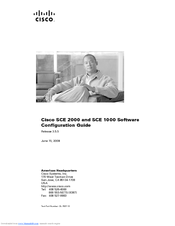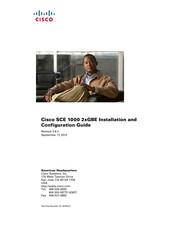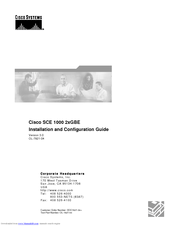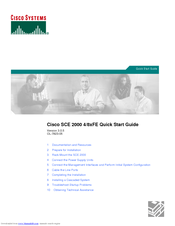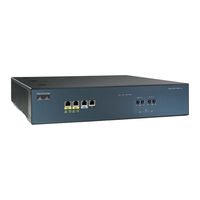Cisco SCE 1000 and Manuals
Manuals and User Guides for Cisco SCE 1000 and. We have 5 Cisco SCE 1000 and manuals available for free PDF download: Configuration Manual, Installation And Configuration Manual, Quick Start Manual
Cisco SCE 1000 and Configuration Manual (512 pages)
Software Configuration Guide
Table of Contents
-
-
-
Partial Help55
-
-
-
-
Introduction63
-
-
-
Utilities
79 -
-
-
The User Log87
-
-
-
Options104
-
-
-
-
-
SNMP Protocol128
-
Mibs130
-
-
-
-
About Passwords141
-
-
IP Configuration146
-
IP Advertising149
-
-
-
Options154
-
-
Configure SNTP158
-
-
Introduction167
-
Line Interfaces167
-
-
-
Managed Vpns171
-
-
-
TOS Marking192
-
-
-
-
Introduction209
-
Netflow210
-
-
Categories212
-
Forwarding Modes213
-
Priority213
-
Protocol214
-
Transport Type214
-
-
-
Introduction229
-
-
-
-
Recovery278
-
System Upgrades282
-
Attack Filtering286
-
-
-
Options303
-
-
-
-
The Attack Log313
Advertisement
Cisco SCE 1000 and Installation And Configuration Manual (140 pages)
2xGBE
Table of Contents
-
-
SCE Platform18
-
-
Introduction43
-
-
-
-
Cisco SCE 1000 and Installation And Configuration Manual (131 pages)
Brand: Cisco
|
Category: Network Hardware
|
Size: 1.11 MB
Table of Contents
-
Preface
9 -
Overview
17 -
Topology
31-
Redundancy35
-
Advertisement
Cisco SCE 1000 and Quick Start Manual (59 pages)
Cisco Systems SCE 2000 Platform Quick Start Guide
Brand: Cisco
|
Category: Network Hardware
|
Size: 0.49 MB
Table of Contents
-
Final Tests45
-
Link Mode52
Cisco SCE 1000 and Quick Start Manual (49 pages)
Service Control Engine 1000 2xGBE
Brand: Cisco
|
Category: Controller
|
Size: 2.15 MB
Table of Contents
-
Final Tests38
